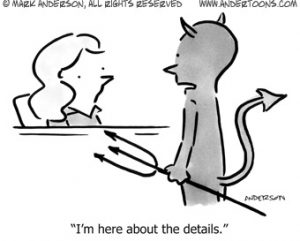 Taxes are often the most ignored element of investing. But after all is said and done, it’s not what you earn, it’s what you get to keep, so taxes definitely matter. Whether you have a professional investment manager or you’re a do-it-yourselfer, you should be aware of a technique you can use to take control of your investment taxes. We call it anti-taxing; it’s also known as tax-loss-harvesting, and it’s one of many ways to reduce your year end bill to Uncle Sam. Here’s the how, why and when:
Taxes are often the most ignored element of investing. But after all is said and done, it’s not what you earn, it’s what you get to keep, so taxes definitely matter. Whether you have a professional investment manager or you’re a do-it-yourselfer, you should be aware of a technique you can use to take control of your investment taxes. We call it anti-taxing; it’s also known as tax-loss-harvesting, and it’s one of many ways to reduce your year end bill to Uncle Sam. Here’s the how, why and when:
The Ups and Downs
In the short term, less than 12 months, markets move in all sorts of directions and patterns that mostly resemble randomness. So it’s likely that positions you own will at some point have a negative return. This is completely normal. As an example below are six asset classes we use in all Osbon Capital portfolios. Let’s take a look at what they’ve done in 2015. So far this year these major asset classes experienced their own highs in January, April, May and June and lows in August and September. (See table)

The Surgical Swap
Anti-taxing is a simple swap. Sell anything with a loss and replace it with a similar but not quite identical asset. If you have a loss in emerging markets, sell that position and it will go on your yearly tax record as a loss. Then buy it back either 31 days later (that’s the IRS rule) OR on the same day you can buy a similar emerging market position to replace it. The loss is then used to offset capital gains or even ordinary income, lowering your total tax bill for the year.
We do this for all Osbon portfolios. It’s a delicate process to take the loss without altering your asset allocation, call it portfolio surgery. Further, if it’s not done in accordance with IRS rules, penalties and interests can ruin your summer.
Performance of 5 major assets in 2015. (Data: Yahoo)

When Is A Good Time? When $10k is enough
Your tax window for the year closes on December 31st. We can’t predict the markets in the short term so we won’t know for sure when an annual low in the market will occur, or if it has already happened. But we can use a few rules of thumb to help us decide when to harvest a loss. On a $1,000,000 portfolio we tend to wait until there is a roughly $10,000 loss in a single position to do the swap. In the best case scenario, your new position continues to lose value over the next 31 days so you will be able to reverse the swap (buying back your original asset) with an additional loss. If your new asset gains in value, you may be faced with adding a taxable gain to your records, making your tax swap less effective.
Is It Swap-Worthy?
 How do you know what to buy in the swap transaction? You want it to be as similar as possible to the original holding, but it can’t be too close or it will fail the IRS “wash rule” test. In addition, you want the new position to be as worthy a holding as your original security. To evaluate this you’d want to consider the sponsor, tracking error, expense ratio, representation, liquidity, bid/ask spread, etc. In our view, only a small portion of available funds make the grade. As we wrote about last week, there are 1,700 ETFs available but only about 60 we would recommend using. The other 1600+ would not pass our test for a tax swap. In fact, we haven’t found any adequate swaps for the international real estate and international bond ETFs we utilize.
How do you know what to buy in the swap transaction? You want it to be as similar as possible to the original holding, but it can’t be too close or it will fail the IRS “wash rule” test. In addition, you want the new position to be as worthy a holding as your original security. To evaluate this you’d want to consider the sponsor, tracking error, expense ratio, representation, liquidity, bid/ask spread, etc. In our view, only a small portion of available funds make the grade. As we wrote about last week, there are 1,700 ETFs available but only about 60 we would recommend using. The other 1600+ would not pass our test for a tax swap. In fact, we haven’t found any adequate swaps for the international real estate and international bond ETFs we utilize.
Before swapping an original primary investment for the second best option (or reversing it), dig into the details. Make sure you’re doing it right, buying an appropriate replacement in the proper time window, and getting the full tax advantage. If you work with an advisor, he or she can walk you through the details that make or break this important tax control technique.
Max Osbon – mosbon@osboncapital.com
Weekly Articles by Osbon Capital Management:
"*" indicates required fields
